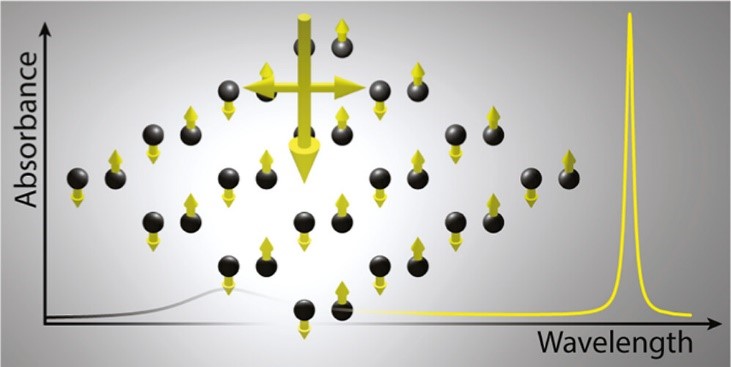Normal Incidence Excitation of Out-of-Plane Lattice Resonances in Bipartite Arrays of Metallic Nanostructures
-
The proposed system supports out-of-plane grid resonances at normal incidence.
-
This has been achieved by exploiting the electric-magnetic interaction mechanism, which couples the electrical response and the magnetic response of the nanostructures.
Madrid / January 15, 2024
A team of researchers from the Institute of Optics of the CSIC and the Italian Institute of Technology have achieved a new breakthrough in the field of nanophotonics by developing an innovative method for efficient normal-incidence excitation of out-of-plane lattice resonances. This new theoretical development, which has been published in the journal ACS Photonics, could be exploited in a wide range of applications, from advanced photonic technologies to ultrasensitive biosensors.
Latest News
Lattice resonances are collective modes that appear in two-dimensional periodic arrays of metallic nanostructures. These resonances are characterized by very strong optical responses with a high quality factor. Among the different types of lattice resonances, out-of-plane resonances, for which the nanostructures are polarized in a direction perpendicular to the nanoparticle array, are particularly interesting. Thanks to their geometrical configuration, these modes exhibit minimal radiative losses, allowing very high quality factors and near-field strengths to be obtained. However, until now their use has been very difficult and has only been achieved with oblique incidence, which limits their applicability in integrated devices.
In this study, led by Juan José Álvarez Serrano and Juan Ramón Deop Ruano under the direction of Dr. A. Manjavacas, a method for the excitation of out-of-plane lattice resonances under normal incidence is proposed for the first time. The method consists of taking advantage of the coupling between the electrical and magnetic response of nanostructures, a phenomenon that has been underestimated until now in the study of arrays composed of metallic nanostructures.

Schematic of the system under consideration, consisting of a square array of period a = 800 nm, with two silver nanospheres per unit cell of diameter D = 160 nm.
The system they have proposed consists of a square array with two silver nanospheres per unit cell. Using the coupled dipole model developed in-house, the researchers have shown that electric-magnetic coupling provides a general mechanism for the excitation of out-of-plane lattice resonances under normal incidence conditions. In addition, they have characterized the properties of these modes, demonstrating that extremely high quality factors and near-field strengths are possible. This discovery paves the way for the exploitation of the special properties of out-of-plane lattice resonances in a wide range of applications such as ultrasensitive biosensors and laser emitters at the nanoscale.
The article also includes an analysis of the results in a nanodisk array with the inclusion of a substrate and a coating, which demonstrates the applicability of the results in a realistic system. This scientific advance represents an important step forward in the understanding of out-of-plane lattice resonances and their efficient excitation. The study provides a solid foundation for future research and opens new perspectives in the design and development of state-of-the-art optical devices.
Communication IO-CSIC
cultura.io@io.cfmac.csic.es
Related News
Low-Loss Directional Coupler for the C, L and U Bands Based on Subwavelength Gratings
Madrid / November 28, 2023Researchers from the spin-off Alcyon Photonics, the Optics Institute of the CSIC and the CNRS of Paris-Saclay University...
Next scientific coffee by Pedro Corredera on July 20
Madrid / July 12, 2023This is the third talk of the course. On May 20, 2019, the new definitions of the SI units of measurement based on universal...
A 25 km pulsed laser to help the environment
Madrid / June 21, 2023A team from the CSIC Institute of Optics, in collaboration with the University of Tampere, in Finland, has just taken a new...





